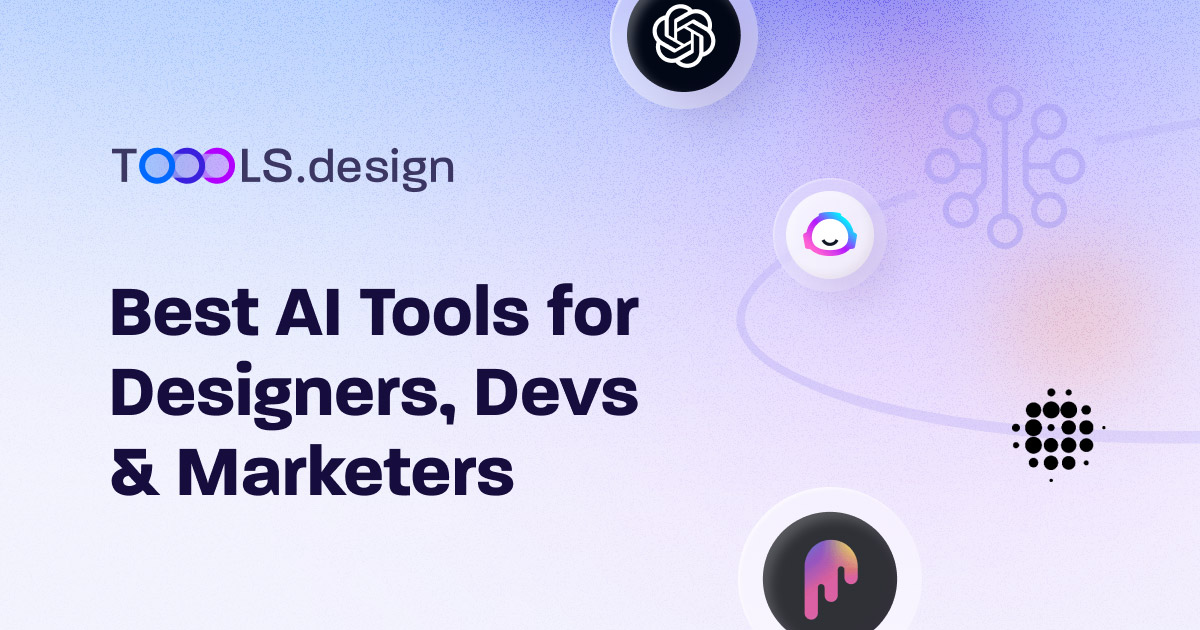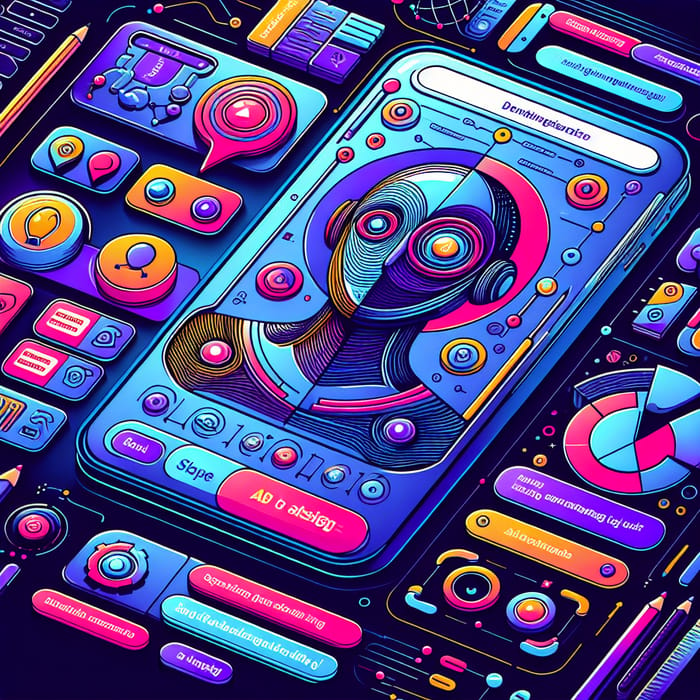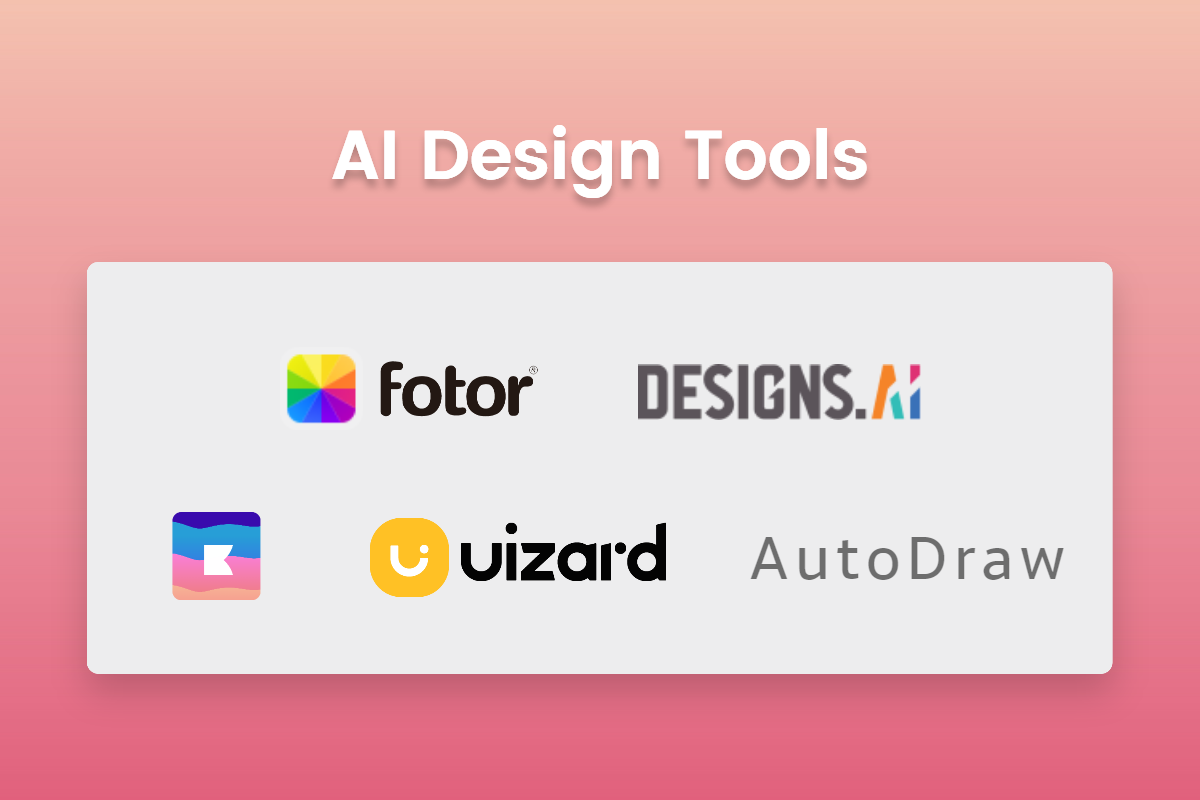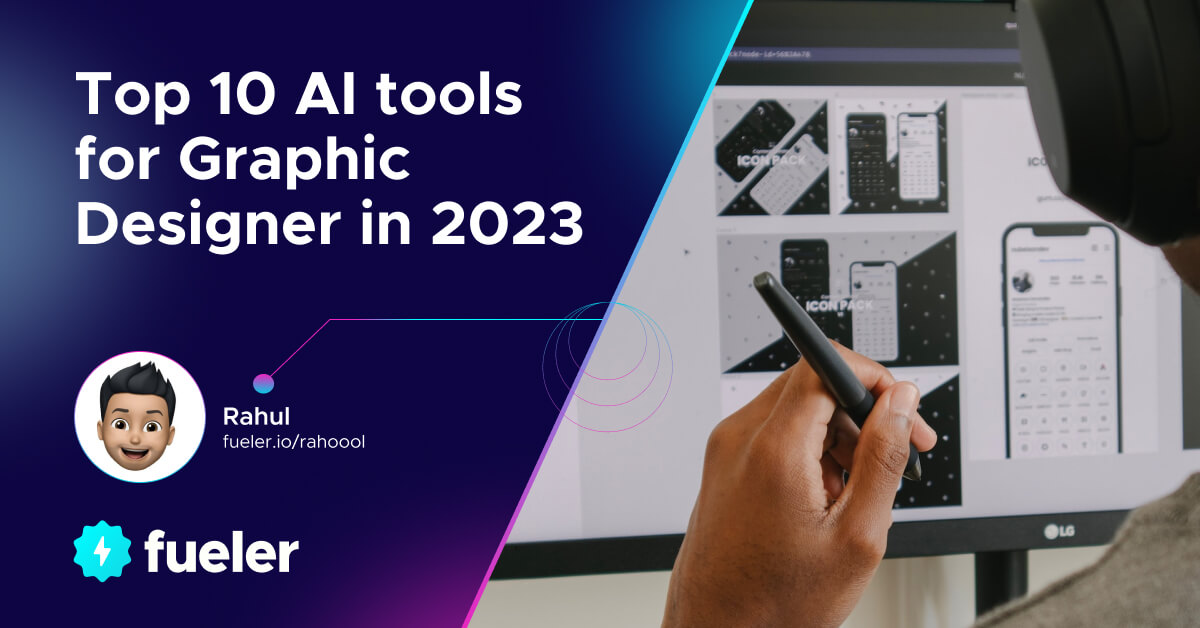AI tools for generating unique and creative design concepts are revolutionizing the design landscape. These tools leverage advanced algorithms and machine learning to produce innovative designs across various disciplines, from logo creation to architectural blueprints. While offering unparalleled speed and exploration of possibilities, it’s crucial to understand their limitations and the vital role of human creativity in the design process.
This exploration delves into the capabilities, applications, and future implications of AI in the world of design.
We’ll examine different AI design tools, their underlying algorithms, and how they facilitate creative exploration through iterative refinement and user input. We’ll also explore successful applications across various design fields, discuss ethical considerations, and envision the future of human-AI collaboration in design.
Introduction to AI Design Tools

The landscape of design is rapidly evolving with the integration of artificial intelligence. AI design tools are no longer a futuristic concept; they are actively reshaping creative workflows across various industries, from graphic design and web development to architecture and product design. These tools leverage machine learning algorithms to automate tasks, generate novel ideas, and assist designers in bringing their visions to life more efficiently.
The accessibility and capabilities of these tools are continuously expanding, making them increasingly valuable assets for both seasoned professionals and aspiring creatives.AI design tools offer significant advantages, streamlining the design process and unlocking new creative possibilities. Automation of repetitive tasks, such as image resizing or color palette generation, frees designers to focus on higher-level creative decisions and strategic thinking.
Moreover, AI can analyze vast datasets of existing designs to identify trends and suggest innovative solutions, pushing the boundaries of conventional design approaches. However, limitations exist. AI tools currently lack the nuanced understanding of human emotion and cultural context that often informs truly impactful design. Over-reliance on AI-generated outputs can lead to homogenization of styles and a lack of originality.
Furthermore, ethical considerations surrounding copyright and the potential displacement of human designers remain important concerns.
AI Design Tool Examples
The following table showcases a selection of AI design tools categorized by their primary function. These tools represent a cross-section of the current market and illustrate the diverse applications of AI in design. Note that the field is dynamic, with new tools and features constantly emerging.
| Tool Name | Primary Function | Description |
|---|---|---|
| Midjourney | Image Generation | Generates high-quality images from text prompts using a diffusion model. Users input descriptive text, and the AI produces various artistic interpretations. Known for its painterly and surreal styles. |
| DALL-E 2 (OpenAI) | Image Generation | Creates realistic and imaginative images from natural language descriptions. It excels at generating images that blend concepts and styles in unexpected ways, demonstrating strong capabilities in image editing and variations. |
| Autodesk Fusion 360 | 3D Modeling | A comprehensive 3D CAD, CAM, and CAE software suite incorporating AI-powered features for design automation, generative design, and simulation. It assists in creating and optimizing 3D models for various applications. |
| Looka | Logo Design | An AI-powered logo design platform that generates custom logo concepts based on user input, such as business name, industry, and preferred style. It offers a streamlined process for creating professional logos. |
| This table represents a small sample of the many AI design tools available. The field is constantly evolving, with new tools and features emerging regularly. | ||
Unique Concept Generation Techniques

AI design tools leverage sophisticated algorithms and methods to generate unique and creative design concepts. These tools move beyond simple variations on existing designs, aiming to produce truly novel and innovative outputs. This is achieved through a combination of advanced computational techniques and careful management of user input and constraints.The core of unique concept generation lies in the algorithms employed.
These algorithms often combine elements of generative adversarial networks (GANs), variational autoencoders (VAEs), and reinforcement learning. GANs, for instance, involve two neural networks—a generator and a discriminator—that compete against each other. The generator creates designs, while the discriminator evaluates their originality and quality. This iterative process pushes the generator to produce increasingly unique and compelling designs. VAEs, on the other hand, learn the underlying structure of design data and use this knowledge to generate new designs that fit within the learned distribution but are still novel.
Reinforcement learning techniques can guide the generation process by rewarding the creation of designs that meet specific criteria or satisfy user preferences.
Algorithm and Methodologies in AI Design Tools
Several different approaches exist for generating unique designs within AI tools. One common technique is to use a large dataset of existing designs as a foundation. The AI model learns the patterns and styles present in this data, allowing it to generate new designs that share similarities but are not direct copies. This approach can be further refined by incorporating various constraints, such as color palettes, geometric shapes, or specific stylistic elements specified by the user.
Another approach involves using evolutionary algorithms, where a population of designs is iteratively improved through mutation and selection, leading to the evolution of unique and optimized designs. A third approach leverages diffusion models, which start with random noise and progressively refine it into a coherent and original design based on learned patterns.
Constraint Handling and User Input
The ability to effectively handle constraints and user input is crucial for ensuring originality in AI-generated designs. Constraints can range from simple limitations (e.g., a specific color palette) to complex requirements (e.g., adhering to specific branding guidelines). AI tools typically incorporate these constraints by modifying the objective function of the generative model or by adding penalty terms that discourage the generation of designs violating the constraints.
User input can take various forms, such as textual descriptions, sketches, or even examples of preferred designs. These inputs are processed and integrated into the generation process, guiding the AI towards creating designs that align with the user’s vision while still maintaining a degree of originality. For example, a user might provide a textual description like “a minimalist logo for a tech company,” and the AI will generate designs reflecting this brief while still exploring different visual possibilities.
Comparative Analysis of AI Design Tools
Let’s compare three prominent AI design tools: Adobe Sensei, Midjourney, and DALL-E 2. Adobe Sensei, integrated into Adobe Creative Cloud applications, uses a combination of GANs and other machine learning techniques to suggest design variations and automate tasks. Its focus is often on enhancing existing designs or offering creative suggestions based on user input. Midjourney, known for its impressive image generation capabilities, employs a diffusion model to generate images from textual prompts.
Its strength lies in its ability to produce highly artistic and imaginative visuals, even from relatively vague prompts. DALL-E 2, developed by OpenAI, similarly utilizes a diffusion model but with a stronger emphasis on understanding and interpreting complex textual descriptions. It excels at generating photorealistic images and designs based on detailed instructions, offering a high degree of control over the generated output.
While all three tools generate unique designs, their approaches differ significantly in terms of the algorithms employed, the types of input they accept, and the style of designs they produce. Adobe Sensei focuses on assisting existing design workflows, Midjourney prioritizes artistic expression, and DALL-E 2 emphasizes precise control and photorealism.
Creative Exploration and Iteration

AI design tools are not simply automated design assistants; they are powerful collaborative partners capable of significantly accelerating the creative process. The initial concepts generated by these tools serve as a springboard for human ingenuity, enabling designers to explore a much wider range of possibilities than would be feasible through traditional methods. Human interaction is crucial in refining these initial outputs, transforming them from raw potential into polished, impactful designs.The symbiotic relationship between human creativity and AI capabilities allows for rapid iteration and refinement.
This iterative process, fueled by both human intuition and AI’s computational power, is key to unlocking the true potential of AI in design. Designers can leverage AI’s ability to generate variations and explore different stylistic approaches, while their own expertise ensures the final product aligns with the project’s goals and aesthetic vision.
Human Interaction in Refining AI-Generated Designs
Effective collaboration between designers and AI tools necessitates a clear understanding of each party’s strengths. The AI excels at generating a multitude of options quickly, exploring diverse stylistic approaches and experimenting with different parameters. The human designer, on the other hand, brings critical thinking, emotional intelligence, and an understanding of design principles and user experience. This synergy allows designers to select the most promising AI-generated concepts and then refine them based on their creative vision, technical expertise, and understanding of the target audience.
For example, a designer might use an AI to generate multiple logo variations, then select the most promising options and further refine them by adjusting color palettes, typography, and overall composition based on branding guidelines and market research.
A Collaborative Design Workflow
A typical workflow might involve these steps: First, the designer provides the AI tool with initial parameters, such as s, style references, or target audience demographics. The AI then generates a series of initial concepts. The designer reviews these concepts, selecting those with the most potential. Next, the designer uses the AI tool’s features to iterate on these selected concepts, exploring variations, modifications, and style transfers.
This iterative process continues until the designer is satisfied with the final design. Throughout this process, the designer maintains control, using the AI as a tool to enhance their creative process rather than replacing it.
AI-Facilitated Creative Exploration
AI tools facilitate creative exploration through a range of features. For instance, “variations” functions allow designers to generate multiple iterations of a design, exploring subtle differences in color, shape, and composition. “Modifications” tools enable precise adjustments to specific elements of a design, offering granular control over the creative process. “Style transfer” capabilities allow designers to apply the style of one image to another, seamlessly blending different aesthetic approaches.
Imagine a designer using an AI to generate initial sketches for a product packaging design. They then use the variation function to create several color palettes, modify the font to improve readability, and even transfer the style of a successful competitor’s packaging to test different approaches. The AI acts as a versatile assistant, empowering the designer to experiment freely and explore a much wider design space than would be possible without such technology.
Applications Across Design Disciplines
AI design tools are rapidly transforming various design fields, impacting not only the creative process but also the speed and efficiency of design workflows. These tools offer designers powerful capabilities to explore new possibilities, automate repetitive tasks, and ultimately produce innovative and impactful designs across diverse sectors. Their application spans from generating initial concepts to refining final deliverables, significantly altering the traditional design paradigm.AI’s influence is evident across multiple design disciplines, with each field leveraging its unique capabilities in distinct ways.
The following sections illustrate how AI is being used to enhance design processes and generate novel solutions in various areas.
Graphic Design Applications of AI
AI is revolutionizing graphic design by automating tasks, generating unique visual concepts, and assisting in the creation of personalized designs. AI-powered tools can analyze existing designs, identify trends, and suggest stylistic choices, significantly accelerating the design process. They can also generate variations of logos, create unique patterns, and even develop entire branding identities based on provided parameters.
- Logo Generation: Tools like Looka and Tailor Brands utilize AI algorithms to generate multiple logo options based on user input, such as company name, industry, and preferred style. This significantly reduces the time and cost associated with traditional logo design.
- Image Enhancement and Upscaling: AI-powered tools like Topaz Gigapixel AI can enhance the resolution of low-resolution images, improving their quality for print or digital use. This is particularly useful for restoring older images or creating high-quality versions from limited source material.
- Pattern and Texture Creation: AI algorithms can generate intricate and unique patterns and textures that would be difficult or time-consuming to create manually. These generated assets can then be used in various design projects, from website backgrounds to textile designs.
Web Design Applications of AI
In web design, AI is being used to optimize website layouts, improve user experience (UX), and personalize website content. AI-powered tools can analyze website traffic data, user behavior, and design best practices to suggest improvements to website design and functionality. This data-driven approach leads to more effective and user-friendly websites.
- Website Layout Generation: Some AI tools can automatically generate website layouts based on content and design preferences, streamlining the initial stages of web design. This allows designers to focus on more complex aspects of the project.
- Personalized Content Recommendations: AI algorithms can analyze user data to provide personalized content recommendations, improving user engagement and satisfaction. This personalization extends to website design elements, adapting the layout and content based on individual user preferences.
- Accessibility Optimization: AI tools can analyze websites for accessibility issues, such as insufficient color contrast or lack of alt text for images, helping designers create more inclusive and accessible websites.
Product Design Applications of AI
AI is transforming product design by enabling designers to explore a wider range of design possibilities, optimize product functionality, and accelerate the prototyping process. AI-powered tools can simulate product performance, predict user interaction, and generate innovative design concepts.
- Generative Design: AI algorithms can generate multiple design options for a product based on specified constraints, such as material properties, manufacturing limitations, and desired functionality. This allows designers to explore a much broader design space than would be possible manually.
- Predictive Modeling: AI can simulate product performance under various conditions, helping designers identify potential issues early in the design process and optimize product functionality. This reduces the need for extensive and costly physical prototyping.
- Ergonomic Optimization: AI can analyze product designs for ergonomic factors, ensuring that products are comfortable and easy to use. This leads to improved user experience and reduces the risk of injuries.
Architectural Design Applications of AI, AI tools for generating unique and creative design concepts
In architecture, AI is used to optimize building designs, improve energy efficiency, and generate innovative building forms. AI-powered tools can analyze site conditions, building codes, and environmental factors to create sustainable and efficient building designs. They can also generate unique and aesthetically pleasing building forms based on specified parameters.
- Building Information Modeling (BIM) Integration: AI is increasingly being integrated into BIM software, enhancing the efficiency and accuracy of architectural design processes. AI algorithms can automate tasks such as generating structural elements, optimizing building layouts, and detecting design conflicts.
- Energy Efficiency Optimization: AI can analyze building designs to optimize energy performance, minimizing energy consumption and reducing environmental impact. This leads to more sustainable and environmentally friendly buildings.
- Generative Design for Building Forms: AI can generate unique and innovative building forms based on specified constraints, such as site conditions, building codes, and desired aesthetic qualities. This allows architects to explore a wider range of design possibilities and create truly unique buildings.
Future Trends and Implications: AI Tools For Generating Unique And Creative Design Concepts

The rapid evolution of artificial intelligence is poised to significantly reshape the landscape of creative design. AI-powered design tools are no longer merely supplementary aids; they are becoming increasingly sophisticated partners, capable of automating complex tasks, generating novel concepts, and even anticipating design trends. Understanding the trajectory of this technology and its ethical implications is crucial for both designers and businesses alike.AI design tools will continue to advance in several key areas.
Expect to see improvements in generative capabilities, leading to more nuanced and refined design outputs. The integration of AI with other technologies, such as virtual and augmented reality, will create immersive design workflows and facilitate more collaborative processes. Furthermore, the ability of AI to learn and adapt from vast datasets of design information will enable the creation of personalized and highly tailored design solutions.
Enhanced Generative Capabilities and AI-Driven Personalization
Future AI design tools will move beyond simple variations of existing designs. They will possess the ability to generate truly novel and unexpected concepts, informed by a deep understanding of design principles, aesthetics, and user preferences. This will be achieved through advancements in machine learning algorithms, particularly those focused on generative adversarial networks (GANs) and transformers. Imagine an AI that can not only generate multiple logo variations based on a brand’s guidelines but also suggest entirely new visual identities, pushing creative boundaries beyond human limitations.
The integration of user feedback and preference data will allow for real-time personalization, creating bespoke designs that perfectly match individual needs and tastes. This level of personalization could revolutionize fields like e-commerce, where product customization is increasingly sought after.
Ethical Considerations in AI-Driven Design
The increasing reliance on AI in creative design raises several ethical questions. One primary concern is the potential displacement of human designers. While AI can automate certain tasks, the creative process remains fundamentally human; it involves intuition, emotional intelligence, and cultural understanding that AI currently lacks. Another crucial consideration is the issue of intellectual property rights. Determining the ownership of designs generated by AI is a complex legal challenge that requires careful consideration and regulation.
Furthermore, the potential for algorithmic bias in AI design tools is a significant concern. If the training data reflects existing biases, the AI may perpetuate and even amplify these biases in its design outputs, leading to inequitable outcomes. Therefore, ensuring fairness, transparency, and accountability in the development and application of AI design tools is paramount.
A Future of Seamless Human-AI Collaboration
Imagine a design studio of the future. A team of human designers is working on a complex architectural project. They use an AI design tool that not only helps them generate initial design concepts based on client specifications and environmental constraints but also provides real-time feedback on structural integrity, energy efficiency, and material costs. The AI suggests innovative solutions, optimizing designs for sustainability and minimizing waste.
The human designers, leveraging their creative expertise and critical thinking skills, refine and enhance these suggestions, incorporating elements of human emotion and cultural relevance. The AI continuously adapts to the human input, learning from the iterative design process and suggesting further improvements. This collaborative workflow leverages the strengths of both human creativity and AI’s computational power, resulting in exceptional design outcomes that are both innovative and sustainable.
The process is fluid, seamless, and iterative, with the AI acting as a powerful partner, augmenting rather than replacing human designers. The final design is a testament to the power of human-AI synergy, a product of creative collaboration that transcends the capabilities of either alone.
Wrap-Up

The integration of AI into the design process is no longer a futuristic concept but a rapidly evolving reality. While AI tools offer powerful capabilities for generating unique and creative design concepts, the human element remains indispensable. The future of design lies in a synergistic partnership between human ingenuity and AI’s computational power, leading to innovative solutions and pushing the boundaries of creative expression.
The ethical considerations surrounding AI in design must be carefully navigated to ensure responsible and beneficial application.

